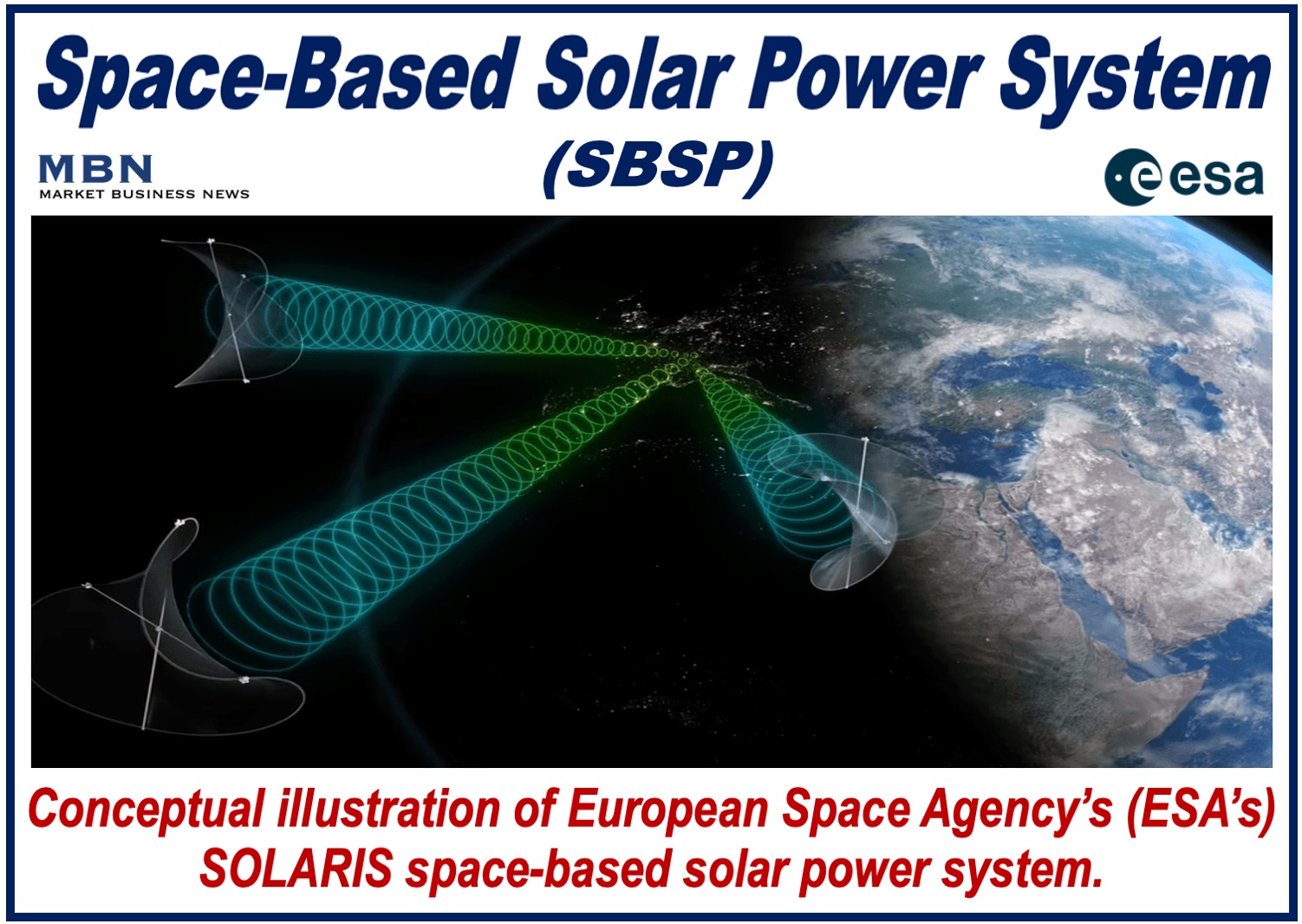Is solar energy from space the solution to our global energy crisis? Could we harness sunlight from space and beam it back to the Earth’s surface?
If so, we could generate far more clean energy than we could ever imagine needing. Is this vision a pipe dream, or could it really become reality?
Globally, we are struggling to transition from fossil fuels to clean energy. If we are serious about combating global warming, we will need to produce clean energy from reliable sources to meet our current and future requirements.
Could space-based solar power (SBSP) be the game-changer we’ve been waiting for? Scientists say that if we capture the Sun’s rays in space and transmit the energy as microwaves to Earth, we could generate continuous power to meet our needs for decades or even a century.
SBSP – We Are Not There Yet
However, the feasibility of providing continuous power for our near-term and even long-term future requirements depends on the development of this technology, which is still on the drawing board.
Although scientists are optimistic, they say that there are still significant technical and economic challenges to overcome before SBSP becomes a reliable or practical energy source.

An Opportunity Up in the Skies
Conventional solar energy is limited by time and weather conditions: we cannot generate electricity at night, and production is significantly reduced during storms or on cloudy days.
Additionally, the Earth’s atmosphere scatters and absorbs some of the Sun’s rays, reducing the intensity of sunlight that reaches solar panels.
Solar panels on Earth are also less efficient at high latitudes (far from the equator) and may lose effectiveness over time due to dirt, dust, or environmental wear.
In contrast, SBSP would have access to a continuous and uninterrupted supply of sunlight in space.
A solar panel in space is up to 13 times more productive than its Earth-bound equivalent, meaning it can generate significantly more energy.
Open Access Government, a UK-based online publication covering public sector policies and research, wrote the following about SBSP:
“SBSP collects solar power in outer space with solar power satellites (SPS) 24 hours a day, seven days a week and transmits the energy via microwave beams to earth stations. It provides a firm, low-carbon, dispatchable, and directable energy source on the system.”
“The beam can be directed to locations where the value of electricity is the highest without increasing demand for traditional power transmission networks.”
According to a whole-energy system study carried out by researchers at Imperial College London, introducing just 8 GW of SBSP into the United Kingdom’s energy mix would save the country £4bn ($5bn) annually.
Space Energy Initiative
The Space Energy Initiative, a UK-based organization focused on developing space-based solar power (SBSP) technology, says that SBSP can help nations achieve net zero, which means balancing the amount of greenhouse gases emitted with the amount removed from the atmosphere.
It would offer a new source of abundant, sustainable base load energy. The United Kingdom, for example, would enjoy grid stability and energy independence at affordable prices.
Frequently Asked Questions (FAQs)
The Space Energy Initiative answers the following frequently asked questions regarding SBSP:
-
Weaponization
Question: Can the microwave transmitter be used as a death ray/beam weapon?
Answer: No, it cannot. “The aperture size of transmitter and receiving antenna are sized to keep the maximum beam intensity at or below 245 W/m2. This is only one quarter of the intensity of sunlight at noon, which is around 1,000 W/m2.”
-
Human and Wildlife Safety
Question: What would happen if the microwave beam strayed over a densely populated area?
Answer: If humans, birds, other animals, or plants came into contact with the beam, they would not be harmed.
-
Why Now?
Question: Why have we waited so long to consider SBSP?
Answer: The problem, until recently, has been the huge cost. However, thanks to advances in technology, especially regarding launching costs and potential satellite lifespans, SBSP is now becoming cost-competitive with traditional non-fossil fuel power generation methods.
These advancements have made it a more viable and attractive option for clean, renewable energy.
-
Space Debris
Question: Isn’t there a high risk of damage from space debris?
Answer: With the right operational orbit, it is possible to reduce the risk of space debris damage considerably.
“The satellite architecture is highly resilient to damage from space debris or micrometeorites. But space debris is still a risk and both the operational orbits and the orbit raising strategy need study.”
Critics and Proponents
People at NASA’s Office of Technology, Policy, and Strategy are questioning whether SBSP could be economically viable.
They highlight the rapidly declining costs of terrestrial renewables and wonder if SBSP could ever be cost-competitive.
However, proponents argue that NASA’s estimates are overly pessimistic, citing conservative assumptions about satellite lifespans and launch costs.
A study published on January 11, 2024, by NASA’s Office of Technology, Policy, and Strategy appears to be much keener about the prospect of SBSP.
Conclusion
SBSP offers a promising solution to the looming threat of global warming. It has the potential to deliver continuous, abundant, and sustainable energy, free from the limitations of Earth-bound solar power generation.
Advances in satellite technology and significantly lower launch costs have made SBSP a more feasible option. However, there are still major hurdles that need to be overcome.
Critics question the cost-effectiveness of SBSP compared to terrestrial renewables, while proponents argue that with the right investments, it could transform energy systems.
The future of space-based solar power hinges on strong public and private sector commitments and our collective resolve to combat climate change and ensure long-term energy security.
